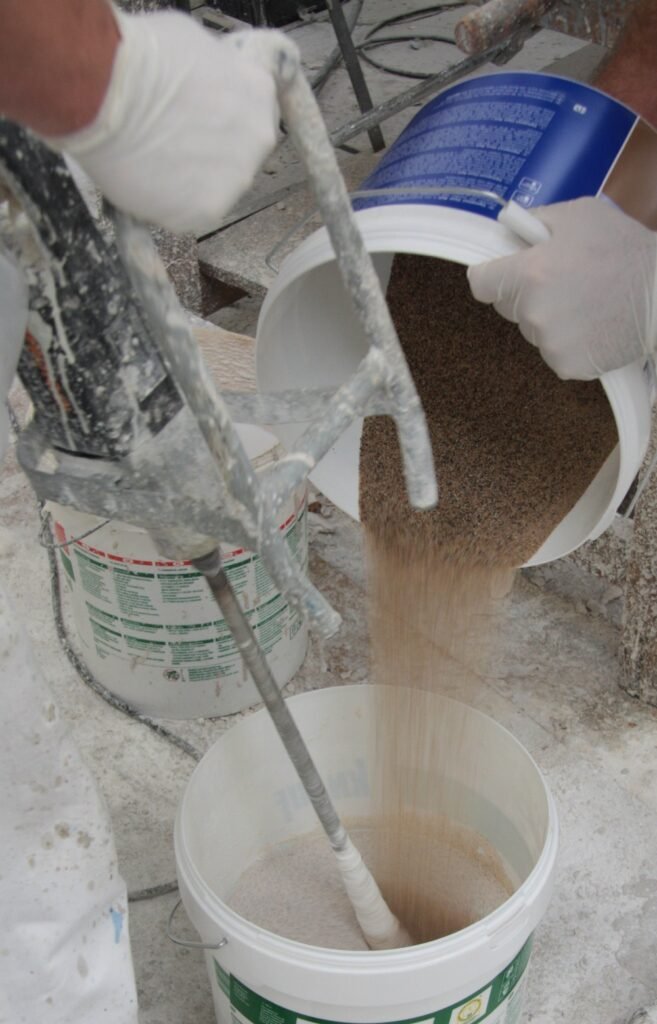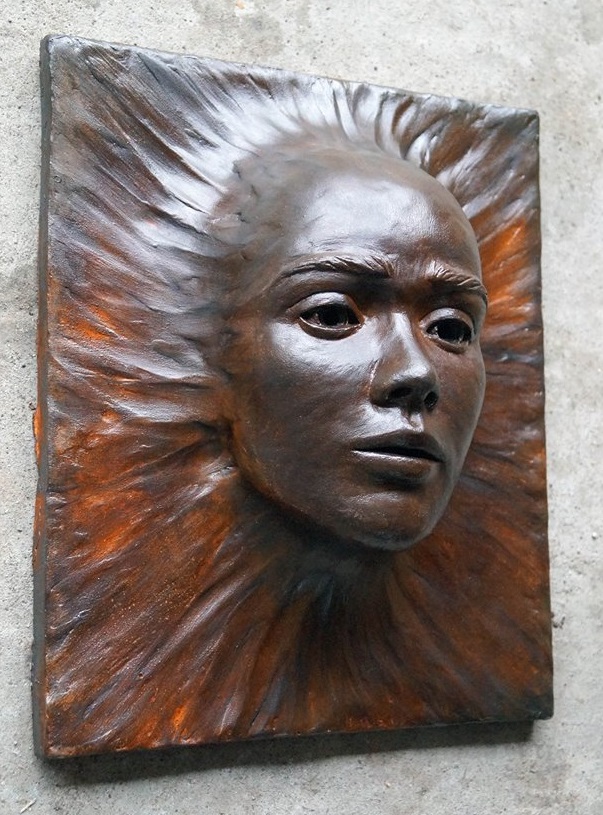Fillers
It is possible to add many other products to the A1 base material in addition to pigment and metal powders. This allows you to give the A1 a different look, change its properties and possibly save costs.
Frequently used materials are dried sand, very fine stones, marble powder, etc. Particle size is up to the costumer’s requirements but most common used is 0.1 – 0.6 mm. In addition to their aesthetic properties, these give the A1 a scratch-resistant and extra-hard top layer. By using sand of different colour and size, a granito or granite appearance can be obtained. In this case, after curing, the top layer can be sanded to bring the stone to the surface to obtain a greater contrast. Sand from the seaside is not suitable as it contains salts.
A special filler is expanded glass (Poraver), these are lightweight recycled glass balls. The main advantage is weight saving. For a good adhesion between the grains, it is possible to mix them beforehand with a limited quantity of A1. Poraver is only suited for indoor projects.

Which fillers can I use to reduce costs?
Poraver (expanded glass) can be used as a filler for A1. This is a recycled lightweight glass ball that allows you to achieve a large volume gain. Add the grains little by little to the A1 base.
Another good and inexpensive filler medium for A1 is dried (silver) sand. (available in the building materials department in your local DIY shop).
The choice of filler depends on your preference in terms of weight, desired appearance and cost.
Adding fillers to the A1
First mix the A1 Liquid (1 part) with the A1 Powder (2 parts). Then gradually add the filler to the A1 (maximum 2 parts). Add A1 Diluent if desired.
We recommend adding a maximum of 0.67 kg fillers per kilogram of A1 created, whereby the ratio is 1 part A1 Liquid, 2 parts A1 Powder and 2 parts filler (all by weight).
A combination of fillers and/or pigments is also possible.


